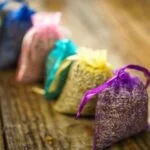Are you looking to learn how to use aromatherapy oils on your skin for their amazing benefits? Aromatherapy oils, also known as essential oils, have been used for centuries for their therapeutic and healing properties. In this article, we will delve into the world of aromatherapy oils and explore their numerous benefits for the skin. We will also discuss different methods of application, safety precautions, DIY blends, and specific oils for common skin concerns.
Aromatherapy oils are concentrated plant extracts that capture the natural aroma and essence of the plant. When used on the skin, they can provide a wide range of benefits such as hydration, soothing irritation, reducing inflammation, and promoting overall skin health. Whether you’re dealing with dryness, acne, aging, or just want to enhance your skincare routine, aromatherapy oils can be a powerful addition to your beauty arsenal.
In this comprehensive guide, we will walk you through understanding the different types of aromatherapy oils and their unique properties. We will also cover important safety precautions such as patch testing to ensure that you can enjoy the benefits of aromatherapy oils without any adverse reactions. So if you’re ready to harness the power of nature for healthy and glowing skin, read on to discover how to incorporate aromatherapy oils into your skincare routine effectively.
Understanding Different Types of Aromatherapy Oils and Their Properties
Aromatherapy oils, also known as essential oils, are derived from various plant sources and have been used for centuries to promote skin health and wellness. Each type of aromatherapy oil possesses unique properties that offer specific benefits for the skin.
Here are some common types of aromatherapy oils and their properties:
- Lavender: Known for its calming and soothing properties, lavender oil can help reduce redness and irritation on the skin. It is also beneficial for promoting relaxation and stress relief.
- Tea Tree: With its antimicrobial and anti-inflammatory properties, tea tree oil is often used to address acne and blemishes on the skin. It can also help control excess oil production.
- Rosehip: This oil is rich in vitamins A and C, as well as essential fatty acids, making it a great option for addressing signs of aging such as fine lines and wrinkles. It also helps improve skin tone and texture.
- Peppermint: Peppermint oil has a cooling sensation that can provide relief for dry, itchy skin. Its antiseptic properties make it useful for addressing scalp concerns such as dandruff.
It’s important to note that these are just a few examples of the many aromatherapy oils available, each with its own set of benefits for the skin. Before using any aromatherapy oil topically, it’s essential to understand its properties and potential effects.
When selecting an aromatherapy oil for skincare, consider your specific needs and concerns to choose the most suitable option for your skin type. Additionally, be mindful of any potential sensitivities or allergies you may have to certain oils before incorporating them into your skincare routine. Always perform a patch test before using any new essential oil on your skin to ensure compatibility.
Safety Precautions and Patch Testing for Aromatherapy Oils
Aromatherapy oils can offer numerous benefits for skin health and wellness, but it is important to use them safely and responsibly. Before incorporating aromatherapy oils into your skincare routine, it is crucial to understand the safety precautions and conduct patch testing to avoid any adverse reactions.
Understanding Safety Precautions
While aromatherapy oils can be beneficial for the skin, it is essential to recognize that they are highly concentrated plant extracts and should be used with caution. Some essential oils can cause irritation or allergic reactions in certain individuals, so it is important to be aware of any potential risks before using them on your skin.
Conducting Patch Testing
Before applying a new aromatherapy oil directly to the skin, it is recommended to perform a patch test to check for any adverse reactions. To conduct a patch test, dilute a small amount of the essential oil in a carrier oil (such as jojoba or coconut oil) and apply a small amount to the inside of your wrist or elbow.
Wait 24 hours and observe for any signs of redness, itching, or irritation. If no reaction occurs, the oil may be safe for use on your skin.
Special Precautions for Certain Individuals
Pregnant or nursing women, children, elderly individuals, and those with certain medical conditions should exercise extra caution when using aromatherapy oils on their skin. It is recommended to consult with a qualified aromatherapist or healthcare professional before using essential oils if you fall into one of these categories.
Additionally, some essential oils are phototoxic and can cause skin sensitivity when exposed to sunlight, so it’s important to know which oils carry this risk. By following these safety precautions and conducting patch tests, you can enjoy the benefits of aromatherapy oils without risking any adverse reactions on your skin.
Methods of Applying Aromatherapy Oils on the Skin
When it comes to using aromatherapy oils on the skin, there are several methods of application that can be effective in reaping their benefits. One common method is diluting the essential oils in a carrier oil, such as coconut oil or sweet almond oil, before applying it directly to the skin.
This helps to prevent skin irritation and allows for better absorption. Another popular method is adding a few drops of essential oils to your bathwater, allowing you to enjoy both the aromatic and topical benefits of the oils.
For a more targeted approach, you can create your own aromatherapy oil-based lotions or creams by mixing a small amount of essential oil with an unscented moisturizer. This allows you to tailor the concentration of the essential oil to your specific skincare needs. Additionally, using a diffuser with essential oils can indirectly benefit the skin by promoting relaxation and reducing stress, which can have a positive impact on skin health.
It’s important to note that some essential oils may be too potent to apply directly onto the skin and may require further dilution. Always read the instructions and warnings on essential oil labels and consider consulting with a qualified aromatherapist or dermatologist before using any new essential oil topically.
| Aromatherapy Oil Application Method | Benefits |
|---|---|
| Diluting in Carrier Oil | Prevents skin irritation and allows for better absorption |
| Bathwater Addition | Enjoy both aromatic and topical benefits of the oils |
| Creating Lotions/Creams | Tailor concentration of essential oil to specific skincare needs |
DIY Aromatherapy Oil Blends for Skin Health and Wellness
Calming Blend
One popular DIY aromatherapy oil blend for skin health and wellness is the calming blend. This blend often includes lavender, chamomile, and rose essential oils. Lavender is known for its soothing properties, while chamomile is gentle and excellent for sensitive skin. Rose essential oil has antioxidant properties that can help improve overall skin health.
Revitalizing Blend
If you’re looking to energize and revitalize your skin, consider creating a DIY aromatherapy oil blend with citrus essential oils such as lemon, orange, and grapefruit. Citrus oils are known for their bright, uplifting scents and their ability to promote clearer-looking skin. However, it’s important to note that these oils are photosensitive and should be used with caution if going out in the sun.
Hydrating Blend
For those with dry or dehydrated skin, a hydrating blend of aromatherapy oils can be beneficial. Ingredients such as geranium, sandalwood, and ylang-ylang essential oils are often used in this type of blend. Geranium can help balance oil production, while sandalwood and ylang-ylang are known for their moisturizing properties.
Creating your own aromatic blends allows you to customize the scent and benefits to suit your specific skincare needs. These blends can be used in various skincare applications such as face serums, body oils, or added to unscented lotions. Remember to always perform a patch test before use and consult with a qualified aromatherapist or dermatologist if you have any concerns about using essential oils on your skin.
Specific Aromatherapy Oils for Common Skin Concerns (Eg, Acne, Dryness, Aging)
When it comes to addressing specific skin concerns, aromatherapy oils can be incredibly beneficial. Whether you are dealing with acne, dryness, or signs of aging, certain essential oils can help target and improve these issues. Here are some examples of specific aromatherapy oils for common skin concerns:
- Acne: Tea tree oil is a popular choice for treating acne due to its antibacterial and anti-inflammatory properties. It can help reduce the appearance of blemishes and prevent future breakouts.
- Dryness: For dry skin, oils like jojoba, almond, or rosehip are excellent choices. These oils are rich in nourishing fatty acids and can help hydrate and moisturize the skin effectively.
- Aging: Frankincense oil is known for its ability to promote skin cell regeneration and improve elasticity. It can help diminish the appearance of fine lines and wrinkles, making the skin look more youthful.
It’s important to note that while these essential oils can be beneficial for specific skin concerns, they should always be diluted with a carrier oil before applying them to the skin. This helps prevent irritation or sensitization.
Incorporating these specific aromatherapy oils into your skincare routine can provide targeted support for your individual skin concerns. However, it’s important to perform a patch test before using any new essential oil to ensure that you don’t have an adverse reaction. If you experience any redness, itching, or irritation after the patch test, discontinue use immediately.
By understanding which aromatherapy oils are best suited for common skin concerns like acne, dryness, and aging, you can customize your skincare routine to address your specific needs effectively and naturally.
Tips for Incorporating Aromatherapy Oils Into Your Skincare Routine
Aromatherapy oils can be a wonderful addition to your skincare routine, providing a natural and holistic approach to promoting healthy and glowing skin. When incorporating aromatherapy oils into your daily skincare regimen, there are several tips to keep in mind to maximize their benefits.
First, it’s important to choose the right carrier oil to dilute your aromatherapy oil. Carrier oils such as jojoba, coconut, or sweet almond oil help “carry” the essential oils onto the skin and also provide nourishment and hydration. Different carrier oils have various properties, so selecting one that complements your skin type is key.
Another tip is to remember that less is more when using aromatherapy oils on the skin. Essential oils are highly concentrated plant extracts, so only a few drops are needed for effective results. It’s also crucial to perform a patch test before using any new essential oil to ensure that you do not have an adverse reaction.
Incorporating aromatherapy oils into your skincare routine can be done in various ways. From adding a few drops of essential oils to your favorite unscented moisturizer or creating a DIY facial oil blend tailored to your skin’s needs, there are plenty of options for making the most of aromatherapy’s benefits for your skin.
| Tips for Incorporating Aromatherapy Oils | Into Your Skincare Routine |
|---|---|
| Choose the right carrier oil | Less is more with essential oils |
| Perform a patch test before use | Incorporate into skincare in various ways |
Conclusion
In conclusion, aromatherapy oils have proven to be a powerful and effective addition to any skincare routine, offering a wide range of benefits for healthy and glowing skin. Whether it is addressing common skin concerns such as acne, dryness, or signs of aging, or simply enhancing overall skin health and wellness, aromatherapy oils can be a valuable ally in achieving radiant and beautiful skin.
By understanding the different types of aromatherapy oils and their specific properties, individuals can tailor their skincare routine to address their unique needs. Safety precautions such as patch testing are essential to ensure that the chosen oils are suitable for individual skin types and do not cause any adverse reactions.
Incorporating aromatherapy oils into one’s skincare routine can be as simple as adding a few drops to a favorite moisturizer or creating DIY oil blends. The versatility and customization options offered by aromatherapy oils make them an attractive choice for those seeking natural and holistic solutions for their skin. Ultimately, the power of aromatherapy oils lies in their ability to nourish, rejuvenate, and maintain the health and vitality of the skin in a gentle yet effective manner.
Frequently Asked Questions
How Do You Use Aromatherapy Body Oils?
Aromatherapy body oils can be used in various ways, depending on the desired effect. You can add a few drops to your bath water for a relaxing and aromatic experience, or use them for a soothing massage by applying the oil directly to your skin.
Some people also like to add a few drops to a diffuser to fill their space with a pleasant scent.
Do You Have to Dilute Aromatherapy Oil Before Applying?
It is generally recommended to dilute aromatherapy oils before applying them to the skin, especially if you have sensitive skin or are using potent oils like cinnamon or clove. Diluting with a carrier oil like almond, coconut, or jojoba oil helps prevent skin irritation and allows for better absorption of the essential oils.
Can You Apply Oils Directly to Your Skin?
While some essential oils can be applied directly to the skin, it’s important to do a patch test first and ensure that the oil is safe for direct application. Certain oils may cause irritation or allergic reactions when applied undiluted, so it’s best to dilute them with a carrier oil before applying them directly onto your skin.
Always read the instructions and warnings that come with your essential oils before use.

Are you looking for a natural way to improve your health and wellbeing?
If so, aromatherapy may be the answer for you.





